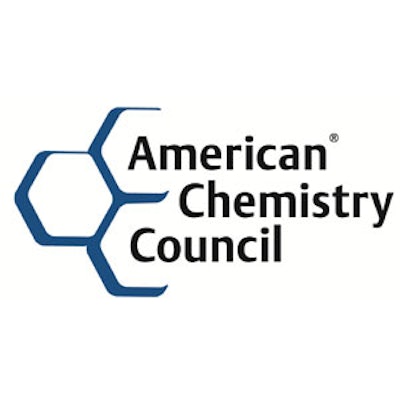
According to the American Chemistry Council (ACC), the U.S. Chemical Production Regional Index (U.S. CPRI) slipped by 0.2 percent in May, following flat growth in April and a 0.1 percent gain in March.
Over the same period, chemical production by segment was mixed. There were gains in the output of pesticides, chlor-alkali, other specialties, and synthetic rubber. These gains were offset, however, by declines in the production of plastic resins, organic chemicals, adhesives, fertilizers, acids, phosphates, sulfates, manufactured fibers, and pharmaceuticals. Coatings production was flat.

Nearly all manufactured goods are produced using chemistry in some form or another. Thus, manufacturing activity is an important indicator for chemical production. On a three-month-moving average basis, manufacturing activity was flat in May, following declines in March and April. Production expanded, however, in several chemistry-intensive manufacturing industries, including appliances, motor vehicles, aerospace, rubber products, printing, and textile products.
Compared to May 2014, U.S. chemical production was ahead by 4.0 percent on a year-over-year basis, a slowing comparison. Chemical production remained ahead of year ago levels in all regions.
The chemistry industry is one of the largest industries in the United States, an $812 billion enterprise. The manufacturing sector is the largest consumer of chemical products, and 96 percent of manufactured goods are touched by chemistry. The U.S. CPRI was developed to track chemical production activity in seven regions of the United States. It is comparable to the U.S. industrial production index for chemicals published by the Federal Reserve. The U.S. CPRI is based on information from the Federal Reserve, and as such, includes monthly revisions as published by the Federal Reserve. To smooth month-to-month fluctuations, the U.S. CPRI is measured using a three-month moving average. Thus, the reading in May reflects production activity during March, April, and May.





















